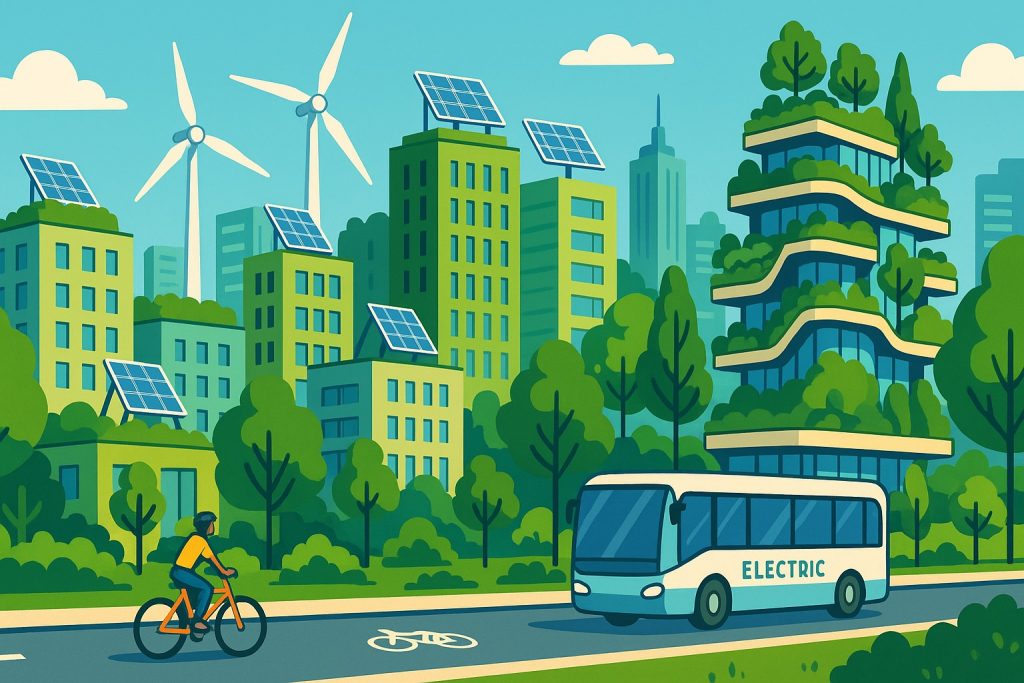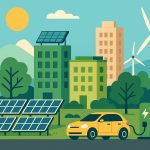As urban populations continue to rise, cities face mounting challenges: air pollution, traffic congestion, heatwaves, and dwindling green spaces. The answer? Sustainable urbanism—a movement focused on reshaping how cities are built and operated to reduce environmental impact while improving quality of life. But what does it mean to design an eco-friendly city, and how can it be achieved?
What Is a Sustainable City?
A sustainable city is one that meets the needs of its current residents without compromising the ability of future generations to meet theirs. It prioritizes environmental health, social equity, and economic viability through responsible planning, clean energy, and inclusive infrastructure.
Key Features of Eco-Friendly Urbanism
1. Green Infrastructure
Sustainable cities are rich in parks, green roofs, urban forests, and natural drainage systems. These features:
- Lower urban temperatures
- Absorb carbon dioxide
- Reduce flood risk
- Improve air and water quality
- Support biodiversity
2. Sustainable Transport
Reducing car dependency is crucial. Solutions include:
- Public transit systems (electric buses, subways)
- Bike lanes and pedestrian-friendly streets
- Car-free zones and shared mobility services
- Charging stations for electric vehicles
3. Energy-Efficient Buildings
Urban structures consume significant energy. Eco-friendly cities adopt:
- Passive design (natural light and ventilation)
- Green building materials
- Solar panels and insulation
- Smart home systems that optimize energy use
4. Waste and Water Management
Modern cities must handle massive waste and water demands. Key solutions:
- Recycling and composting programs
- Rainwater harvesting
- Greywater reuse (for irrigation or toilets)
- Waste-to-energy plants
5. Mixed-Use Zoning and Density
High-density, mixed-use areas reduce the need for long commutes. Residents can live, work, and access services without a car, which decreases:
- Air pollution
- Energy use
- Traffic congestion
Benefits of Sustainable Cities
- Better health: Cleaner air, more exercise, less noise
- Climate resilience: Greener surfaces absorb heat and floodwaters
- Economic opportunity: Green jobs and reduced utility costs
- Social inclusion: Equitable access to housing and services
- Community wellbeing: More shared spaces and cultural connection
Global Examples of Eco-Friendly Urbanism
- Copenhagen, Denmark: Aims to become carbon-neutral by 2025 through bike infrastructure, wind power, and smart heating.
- Curitiba, Brazil: Pioneered sustainable transit and urban forestry.
- Singapore: Combines high-tech infrastructure with extensive green spaces and rooftop gardens.
- Portland, USA: Focuses on zoning laws, public transport, and walkability.
How to Build a More Sustainable City
Whether you’re a policymaker, architect, or resident, here are steps that support greener cities:
- Support green policies and local climate plans
- Push for green spaces in urban development
- Choose eco-friendly materials in construction
- Promote community gardens and urban agriculture
- Use and advocate for public transport and cycling
Glossary
- Urban heat island – The phenomenon where cities become hotter than surrounding areas due to buildings and roads absorbing heat.*
- Passive design – An architectural approach that reduces energy use by maximizing natural heating, cooling, and lighting.*
- Mixed-use zoning – An urban planning strategy where residential, commercial, and recreational buildings coexist in one area.*
- Greywater – Gently used water from sinks, showers, and washing machines that can be reused for non-drinking purposes.*


